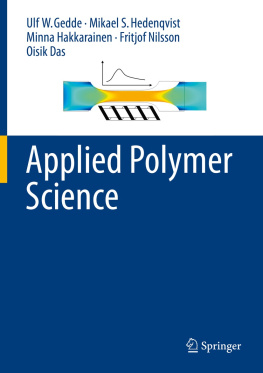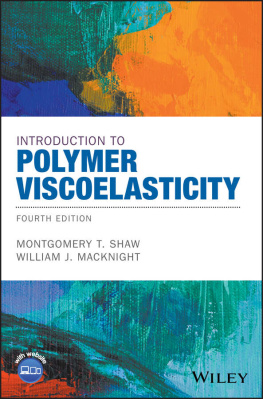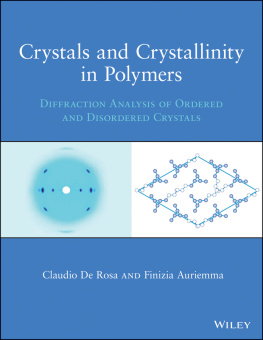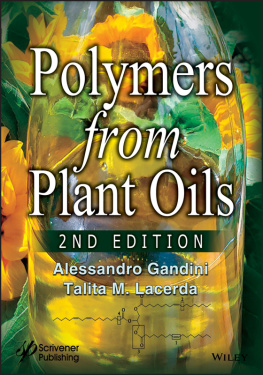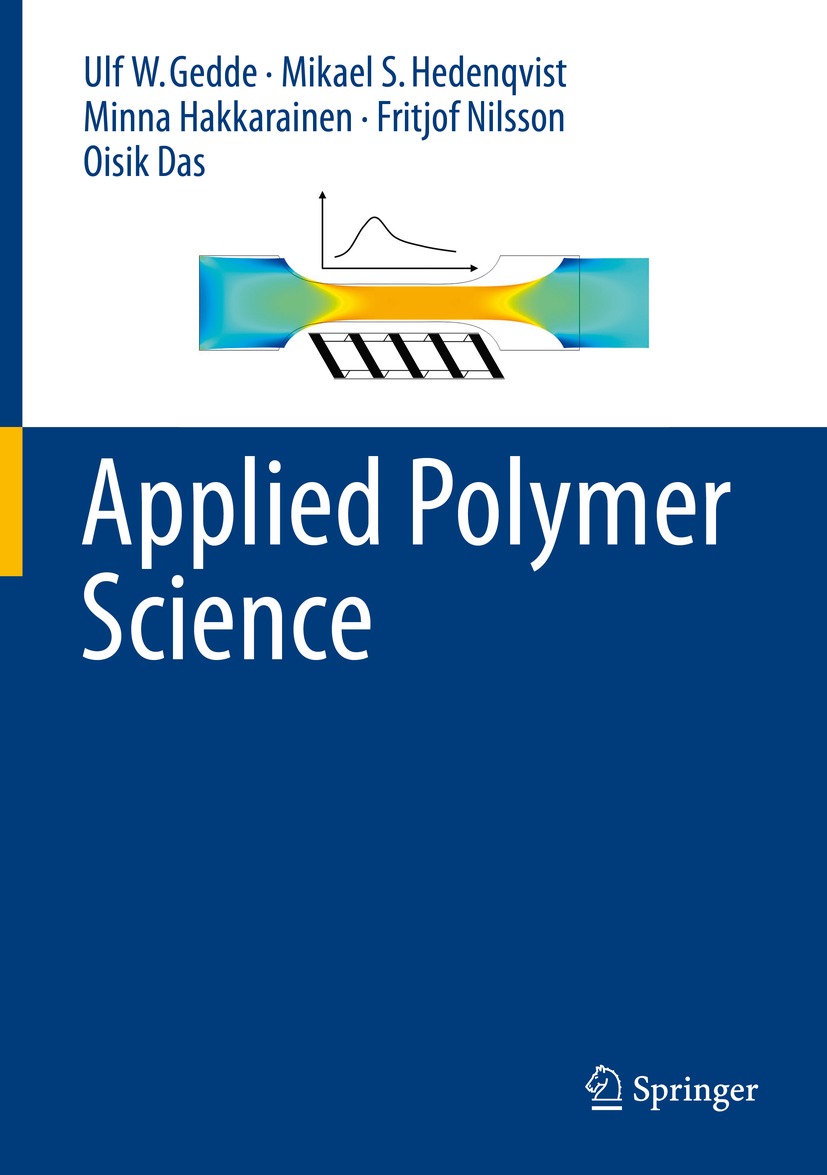Ulf W. Gedde
Fibre and Polymer Technology, KTH Royal Institute of Technology, Stockholm, Sweden
Mikael S. Hedenqvist
Fibre and Polymer Technology, KTH Royal Institute of Technology, Stockholm, Sweden
Minna Hakkarainen
Fibre and Polymer Technology, KTH Royal Institute of Technology, Stockholm, Sweden
Fritjof Nilsson
Fibre and Polymer Technology, KTH Royal Institute of Technology, Stockholm, Sweden
Oisik Das
Structural and Fire Engineering Division, Department of Civil, Environmental and Natural Resources Engineering, Lule University of Technology, Lule, Sweden
ISBN 978-3-030-68471-6 e-ISBN 978-3-030-68472-3
https://doi.org/10.1007/978-3-030-68472-3
The Editor(s) (if applicable) and The Author(s), under exclusive license to Springer Nature Switzerland AG 2021
This work is subject to copyright. All rights are solely and exclusively licensed by the Publisher, whether the whole or part of the material is concerned, specifically the rights of translation, reprinting, reuse of illustrations, recitation, broadcasting, reproduction on microfilms or in any other physical way, and transmission or information storage and retrieval, electronic adaptation, computer software, or by similar or dissimilar methodology now known or hereafter developed.
The use of general descriptive names, registered names, trademarks, service marks, etc. in this publication does not imply, even in the absence of a specific statement, that such names are exempt from the relevant protective laws and regulations and therefore free for general use.
The publisher, the authors and the editors are safe to assume that the advice and information in this book are believed to be true and accurate at the date of publication. Neither the publisher nor the authors or the editors give a warranty, expressed or implied, with respect to the material contained herein or for any errors or omissions that may have been made. The publisher remains neutral with regard to jurisdictional claims in published maps and institutional affiliations.
This Springer imprint is published by the registered company Springer Nature Switzerland AG
The registered company address is: Gewerbestrasse 11, 6330 Cham, Switzerland
Preface
This book has a part of its roots in a textbook Polymer Physics by Ulf Gedde published in 1995. We extend our gratitude to colleagues in our department who made contributions to this book: Maria Conde Braa, Kristian Engberg, Anders Hult, Jan-Fredrik Jansson, Hkan Jonsson, Sari Laihonen, Fredrik Sahln, Marie Louise Skytt, Gran Wiberg, Jens Viebke and Bjrn Terselius. Richard Jones of the Cavendish Laboratory, University of Cambridge, UK, has read through all the chapters and made some very constructive contributions. Mats Ifwarson, Studsvik Material AB, Sweden; Josef Kubat, Chalmers University of Technology, Sweden; and Andrew Keller, University of Bristol, UK, have also made contributions in their specialty fields.
Less than a year ago, Gedde and Hedenqvist completed a book entitled Fundamental Polymer Science, which contained 11 chapters covering, as the title indicates, the fundamental aspects. A second text of a more fundamental character entitled Essential Classical Thermodynamics was completed a few months later by Gedde. Both these books have been published by Springer Nature. Polymer Physics published in 1995 had chapters on thermal analysis, microscopy, spectroscopy and scattering methods, which have been extensively updated and rewritten in this new book (Applied Polymer Science). These fields have developed a great deal since 1995 and the more novel methods have now been included. We felt before writing the book that chromatography and computer simulation/modelling are extremely important fields and that these should also be included. This completes the experimental method part of the book; please note that simulation is really an experimental method although it uses a computer. To these five chapters, we have added three chapters on mechanical properties, transport properties and polymer processing. Each of these subjects forms an entire course at the KTH Royal Institute of Technology (Stockholm), both at the masters level and for the more advanced, postgraduate (Ph.D.) students. The beauty is to provide this material together with the fundamental parts and ensemble of the advanced experimental methods to the students. The motivation for the two remaining chapters is also strong: the environmental aspects of polymers in the context of other materials used by mankind and finally, but not least, the solutions to all the problems given as exercises at the end of each chapter. We thus proudly present three strongly allied books, Fundamental Polymer Science, Essential Classical Thermodynamics and Applied Polymer Science. They are linked by referencing in each chapter in each book to other chapters in all the books. The style is essentially the same in all the books and we have indeed strived to use a language of similar character in all the chapters. Some mathematical language is necessary, but we have kept it at a level suitable for students at technical universities. We have also prepared texts that explain the mathematics in more detail, cf. a chapter in the Essential Classical Thermodynamics book and as sections in the chapters in the other two books. The presence of solutions to the large number of problems appearing in each chapter is important; we know that most students like to solve problems, but it is good to provide solutions in case they lack the time to solve some of the problems. This book has a wide range of possible readers: students in chemistry, physics, materials science, biotechnology and civil engineering. It is suitable for masters students, graduate (Ph.D.) students, and engineers and scientists who have left academia for industry. Furthermore, the book is rich in illustrations that will enable efficient knowledge transfer.
Except from one of the authors, our native language is not English, and although we have been writing many scientific papers and several textbooks before this, we felt a strong need for the assistance of two scientifically skilled Englishmen. Roger Brown (editor of Polymer Testing since many years) and Anthony Bristow have corrected the written language and made it pleasant to read. Anthony Bristow has been assisting us for 40 years and he is a dear friend to us with an outstanding language ear and, just as important, a profound understanding of science in general and polymer science in particular. Geddes younger son, Samuel Gedde, has proven very skilled in making much of the graphics using Adobe Illustrator.
This book would not have been possible without the help of other scientists who provided inspiration, direct input before and after reading the text, and micrographs: Richard H. Boyd (a principal mentor of Gedde and Hedenqvist; whose impact is great although he has been dead for several years); David Bassett (a gentleman with insightful knowledge of semicrystalline polymer morphology, who also provided beautiful micrographs); Bernard Lotz (scientific inspiration and with vast knowledge on polymer physics and crystallography, providing feedback on polymer microscopy and some beautiful micrographs); Grant D. Smith (a master of relaxation processes and computer simulation); Henning Kausch (inspiration and input concerning polymer mechanics and fracture); Karin Odelius (who provided input concerning the chromatographic analysis of polymers); Vigneshwaran Shanmugam (a young but talented researcher who aided Oisik Das in revising the polymer processing chapter); Elaine Espuche and Matteo Minelli (for the constructive inputs to the transport property chapter); Mats Johansson, Juha Heikanen, Yuxiao Cui and Tomas Larsson (for the valuable comments on the spectroscopy section of Chap. ); Istvan Furo and Tore Brinck (providing deep knowledge about quantum chemistry); Henrik Hillborg (giving insight in recent applications of statistical methods); Jakob Wohlert (reviewing the molecular mechanics sections); Mikael Hancke and Yuriy Serdyuk (giving valuable comments on finite element modelling); and Tohr Nilsson for the proofreading of simulation chapter.

